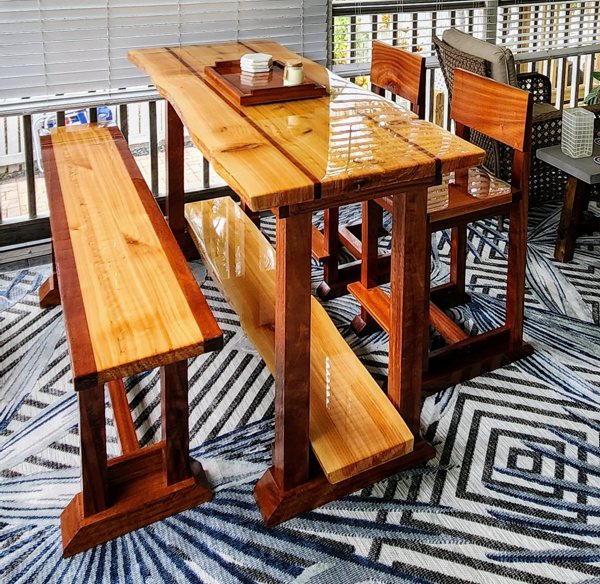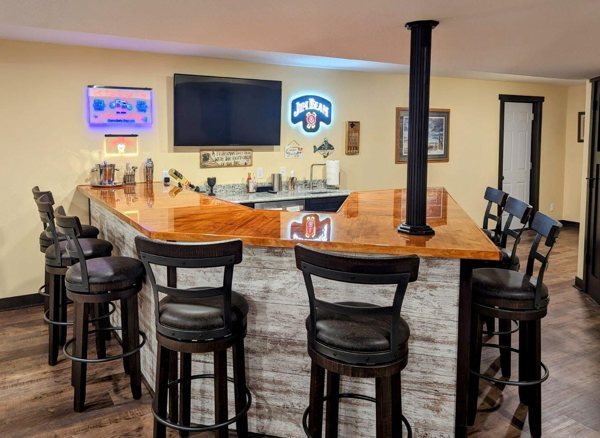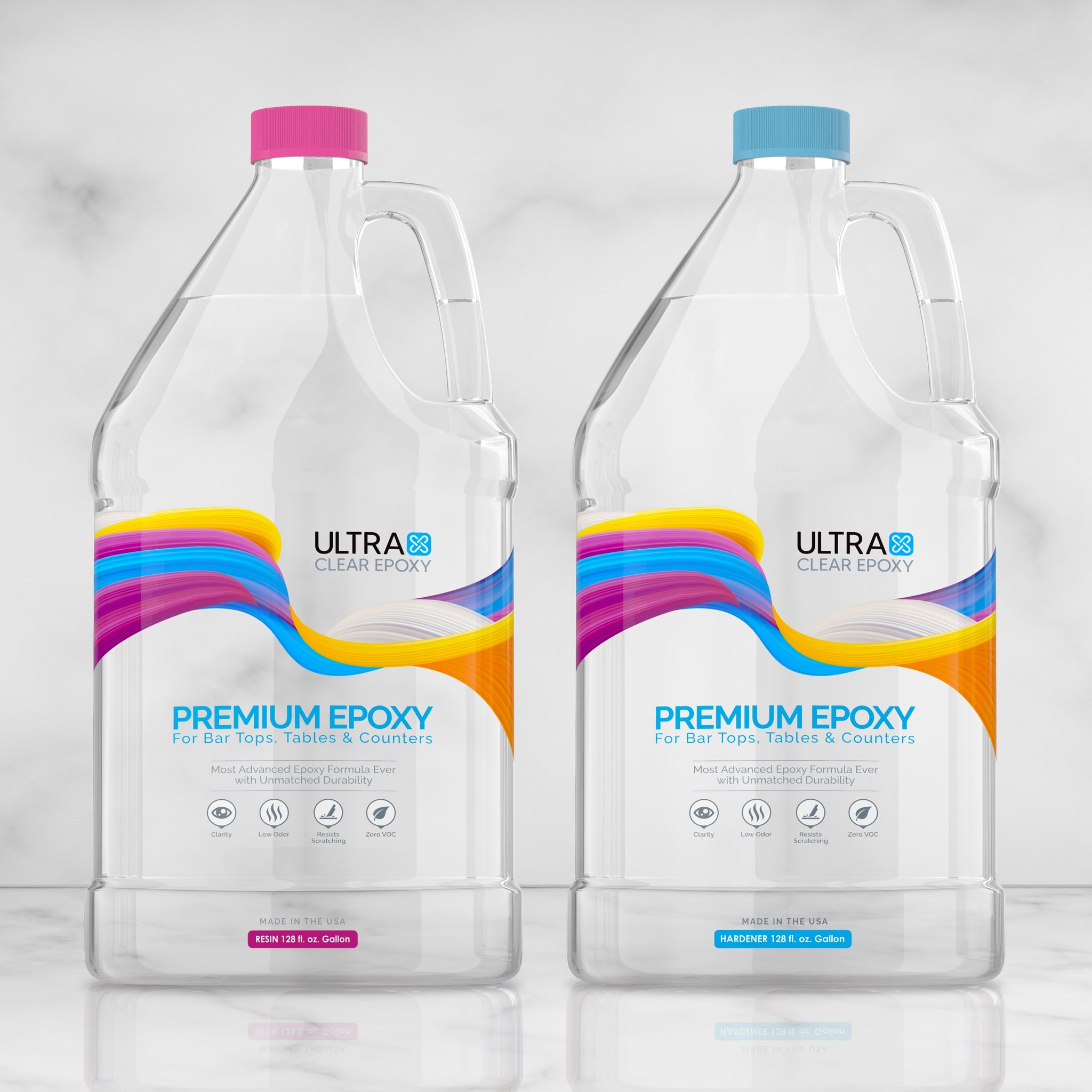Welcome to our explainer for pouring onto sticky epoxy!
Epoxy resin is best known for its role as a sealant used on fixtures such as bar tops and countertops, along with furniture such as table tops, benches, chairs, and more. It's also frequently seen chairs, as well as on artistic creations, including jewelry, pottery, wall art, tumblers, coasters, trays, etc.
When it comes to epoxy resin, every phase of the process must be handled carefully to achieve that iconic crystal-clear finish. Though they're all relatively simple—with easy, clear-cut instructions to follow—each step still requires a bit of care.
In this article, we'll talk about pouring epoxy, specifically focusing on how to apply a coating of epoxy over another one that's still sticky.
The pouring step of epoxy resin
Pouring an epoxy resin batch is one of the more straightforward steps of the process. Typically an epoxy batch is mixed up in a sizable container, having first been deliberately measured, before finally being applied to a suitable substrate material.
Epoxy pouring tips
When it comes to pouring out your resin, there's actually not a lot of finesse involved. You'll mostly just want to keep the container close to the surface as you pour. This will help reduce the formation of air bubbles.
Additionally, even though most epoxy resin is self-leveling—i.e., capable of spreading out on its own until it reaches equilibrium—it still helps if you guide your container slowly over the surface as you pour, enabling it to more evenly spread across the entire substrate.
Learn more about mixing and pouring in our guide here.
Can you pour epoxy over sticky epoxy?
We sometimes get asked if it's safe to pour a fresh batch of epoxy over sticky epoxy. Because this question is a little vague out of context, we often ask for more information before giving our answer.
The truth is that, yes, you can pour epoxy over sticky epoxy, if it hasn't yet cured. However, sometimes epoxy has partially cured but is still sticky—usually a sign that it was under-mixed—and in these scenarios you'll have to do a little more to prepare your finish for that extra coat.
You can pour epoxy over sticky epoxy as long as:
-
Only 4 to 10 hours have passed since your previous pour. This is the perfect window of time within which to apply an additional coat.
- You measured, mixed, and poured the previous batch properly. If anything went wrong, you may have to fix that first.
You cannot pour epoxy over sticky epoxy when:
-
More than 10 hours have passed. You'll need to perform a light sanding first.
- In cases where a full 48 to 72 hours have passed and the epoxy is still sticky. If this happens, it's an indicator that something must have gone wrong at some point in the process, likely during the mixing step.
What causes epoxy to stay sticky after the curing phase?
Sometimes an epoxy coating will not fully cure, remaining soft, moist, or sticky. There are several possible reasons for this to occur, the most common of which being inadequate mixing.
Here's a quick list of some possibilities. We'll discuss each one afterward.
- Inadequate mixing. Proper mixing is essential to a clean blend and cure.
- Poor climate conditions. Epoxy needs a suitable environment to cure fully.
- Low-quality epoxy resin. Some epoxy dealers cut corners on quality. Avoid budget brands and spring for a credible premium epoxy.
Reason #1: Inadequate mixing of the epoxy.
An epoxy resin batch can be finicky. You have to be certain to measure your components (resin and hardener) properly and in the correct ratio.
From there, you have to mix the epoxy thoroughly, occasionally scraping the sides and bottom, until the two components have blended together fully, at which point the curing process starts.
Being sure that your batch has been mixed well enough is not as difficult as it may seem, though. Read the instructions that come with your chosen epoxy brand carefully to achieve optimal results.
Reason #2: Poor climate conditions.
Epoxy projects need to be performed under certain environmental conditions. While these conditions are fairly lenient, they are important to maintain.
For temperatures, it's best to keep your workspace at 75°F. You can go somewhat higher than that and be fine, but as you start getting lower, the epoxy will begin struggling to cure. This can cause your epoxy to never fully cure. Humidity should also be maintained if possible; keep it below 60%.
Reason #3: Using a low-quality resin.
Cured epoxy resin is strong and clear—remarkably so. But that only matters if the resin product you're using is manufactured properly.
Unfortunately, many dealers these days have inscrutable sourcing, or no history whatsoever, and oftentimes these dealers supply subpar epoxy resin products (among other things).
To avoid the problem of substandard epoxy, your best bet is to choose a credible source of high-quality epoxy resin, one that doesn't compromise on quality for the sake of profit.
Additional Resources
Here are some additional resources you may find useful:
- Do you need to sand between coats of epoxy? - Knowing when to sand and when it's not necessary can help you save time and plan your project out.
- Epoxy resin basics: How to apply multiple layers - Learn how to properly apply multiple layers of epoxy for a seamless, crystal-clear finish.
- Epoxy Resin FAQs: Bonding and Curing - Learn the answers to common questions about epoxy's ability to bond to substrates and cure.
Have Questions? Want Advice? We're Here to Help!
If you have any questions about epoxy resin, or if you'd like assistance in planning an epoxy project, please reach out to us at UltraClear Epoxy—our epoxy experts are ready to assist!
You can contact us via phone or email here. During business hours, you can also text chat online with one of our resin specialists by clicking the Help button at the bottom of your screen.
In our online store, you'll find a variety of useful tools and supplies, ideal for resin projects, plus our award-winning UltraClear Bar & Table Top Epoxy and our UltraClear Deep Pour Epoxy.
UltraClear Epoxy—Trusted by over 1 Million+ Happy Customers













